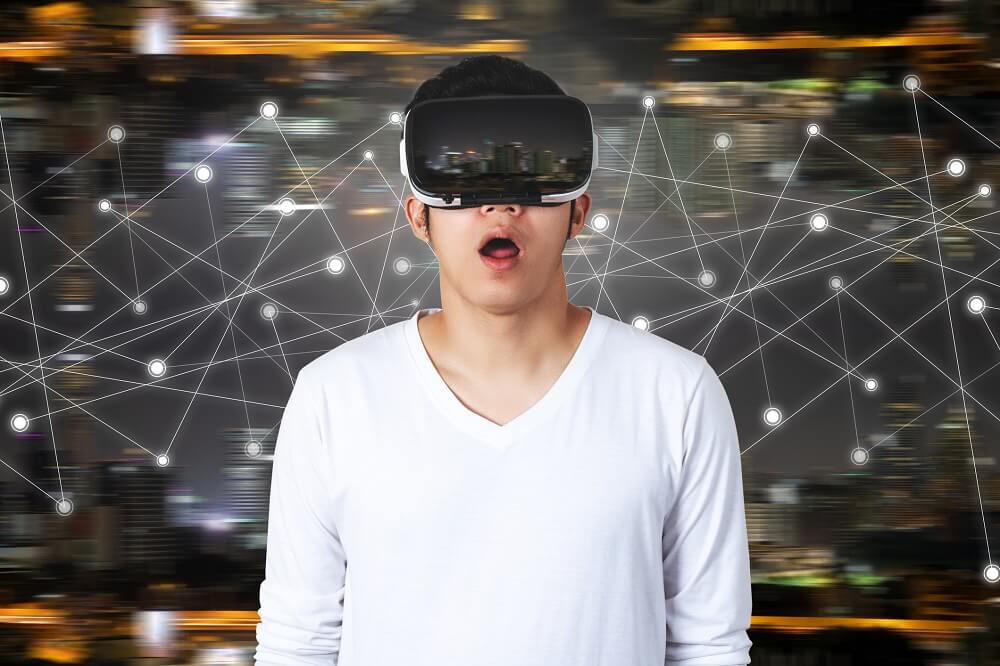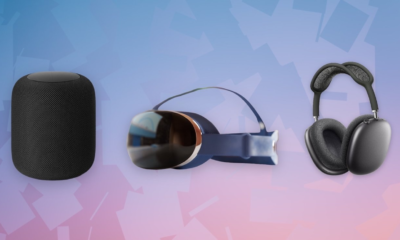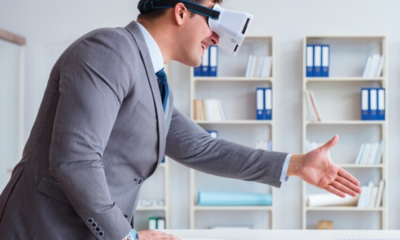Tech News
3 VR Myths That Are Unreal

Virtual reality (VR) has generated a lot of interest over the years — some good and some not so good. It uses computer technology to create simulated environments that allow users to feel as though they’re fully immersed — physically and mentally — in these compelling 3D spaces.
Not surprisingly, tech workers and other professionals who understand the ins and outs of technology have been among the first to dabble with VR software and hardware solutions. (For more on the hype surrounding VR, check out Tech’s Obsession With Virtual Reality.)
“I’m actually an early adopter,” says John Bruno, vice president of productmanagement at Elastic Path, an e-commerce company. “I’ve had a VR headset at home – PlayStation VR – for two years. I’ve also used other hardware setups to do everything from explore new destinations, consume educational content, build configurable products, and interact with a physical workspace.”
Bruno, who previously served as senior analyst at market research firm Forrester, says that the VR solutions available today are only a glimpse of what’ll be possible in the future.
But it’s precisely this future that Bruno alludes to that have many critics questioning whether the benefits of VR outweigh what they say are the possible negatives. No technology is perfect, and any technology can be misused or abused — and VR is no exception. This does not mean, however, that criticisms leveled against the technology hold any water — literally or virtually.
What follows is a look at three VR myths or misconceptions that don’t hold up to proper scrutiny.
Myth 1: VR Is a Passing Fad
According to Zion Market Research in a report early this year, the global VR market was worth $2.02 billion in 2016 and will be worth $26.89 billion by the end of the 2017-2022 forecast period. Looking at VR hardware and software for consumer and business applications, the research firm says that Oculus VR, Sony, HTC and Samsung Electronics are some of the key vendors of virtual reality worldwide. These players across the VR market are, it adds, focusing on innovation and on including advanced technologies in their existing products.
Dr. Hala ElAarag, who earned a Ph.D. in computer science at the University of Central Florida and who works as a professor of computer science at Stetson University, says that the convergence of artificial intelligence and VR will change both in important ways. (One area where VR and AI intersect is wearables. Learn more in How AI Is Enhancing Wearables.)
“The merging of artificial intelligence and VR will revolutionize both fields and will be very important for [the] entertainment industry,” says ElAarag, also a senior member of the Association for Computing Machinery (ACM) and the Institute of Electrical and Electronics Engineers (IEEE).
It will also help the hearing impaired by detecting sounds and the visually impaired by detecting objects. The wide spread of 5G will empower VR. The high speed and the low latency of 5G technology will enable computationally intensive applicationsto be executed in the cloud. This will also have a significant impact on the esportindustry.
Perhaps it should not come as much of a surprise that VR has been on the receiving end of some pushback from different groups in society. After all, says Dr. Mehran Salehi, a computational fluid dynamics (CFD) analyst with Southland Engineering, this isn’t the first time that a new technology has encountered opposition before eventually being widely accepted.
Salehi, who earned his doctoral degree in mechanical engineering from the University of Toledo, adds that negative sentiments surrounding VR will likely let up over time. In 10 years, for instance, VR could very well be the norm in the day-to-day lives of many people.
“My first experience in VR comes with the gaming industry,” he says.
I loved it. I was in a tech exhibition and they were showing a virtual reality setup … I loved it. I was like, “Wow this is amazing.” You go and by the time that you put on those, basically, glasses and the controller you really feel like you’re inside that environment and the way that you interact with the game changes a lot. After that, when I heard that VR is basically finding its way towards industry, I became more interested. I was like, “Oh, yeah, there are people developing code in that area.”
Myth 2: VR Is Just for Gamers & Tech Geeks
One research report shows that the size of the worldwide VR gaming segment is expected to climb to $45.09 billion by 2025. So growth is on the horizon, but it’s not just about gaming.
Bruno, for instance, highlights how VR could revolutionize the car buying experience in the future. While there are some people who love heading down to the dealership lot, looking at vehicles, and haggling to get a great deal, many don’t enjoy the process at all. But VR stands to make the entire process less overwhelming and more consumer friendly.
“VR doesn’t just flood the user with the sensation of being transported,” he says.
It floods the user with data. If you take the car purchasing process today, you identify a make and model you like and you then walk around a car lot to sit in different vehicles with different specs and trims. Imagine a VR experience of the future. Now if you want to see the difference between a black interior and a tan interior, instead of finding a different car with a potentially different exterior color, all of those options and others can change in front of you in real time.
And the benefits extend beyond dealership lots. VR technology will enable consumers to virtually pick up products, to spin the products around in their hands, and to examine every minute detail before making a purchasing decision.
Myth 3: VR Will Create Mindless Zombies Incapable of Living in the Real World
Will VR create a generation of people who are so removed from the real world that they can’t relate to, much less empathize with, other people? Quite the contrary, according to recent research. A study shows that research participants who took part in a VR experience focusing on losing a job and becoming homeless demonstrated stronger and more sustained empathy towards people who are homeless compared to people who simply read an article focused on homelessness. Other benefits of VR include, but are not limited to, boosting retention and recall, simplifying complicated issues and situations, and helping people with different learning styles.
VR — The Road from Here
While there is plenty of upside on the VR front, that doesn’t mean that it’s perfect. A lot of the factors limiting the mass market appeal of VR are hardware related, notes Bruno. But he’s hopeful that time will sort everything out.
“If Moore’s law holds true, we’re not too far off from closing these gaps and building truly immersive experiences,” he says. “Today, VR is ideal for scenarios where the user can be stationary and where the cost of the real-world experience is exorbitant or simply not possible.”
Source: https://www.techopedia.com/3-vr-myths-that-are-unreal/2/33864







